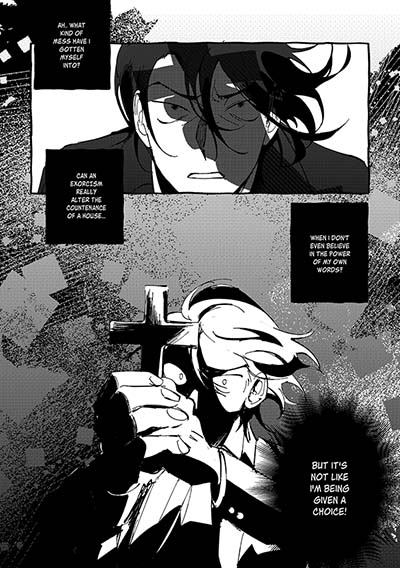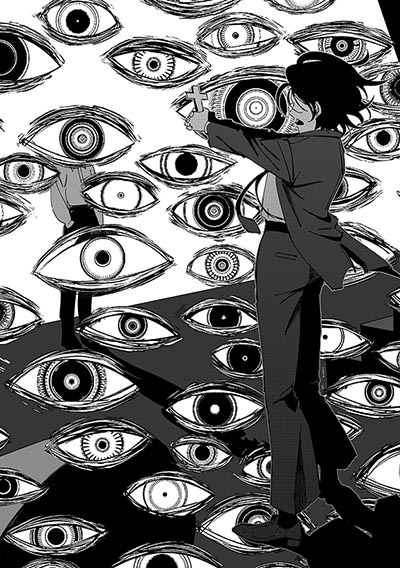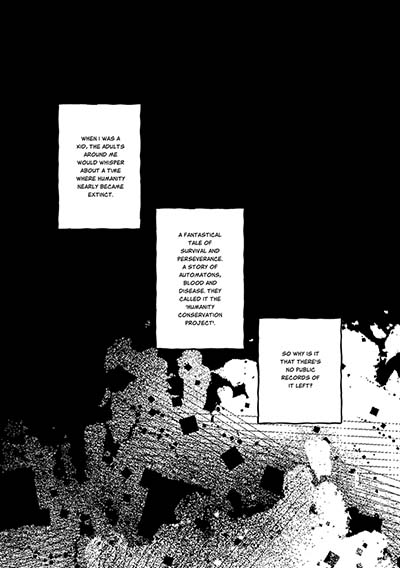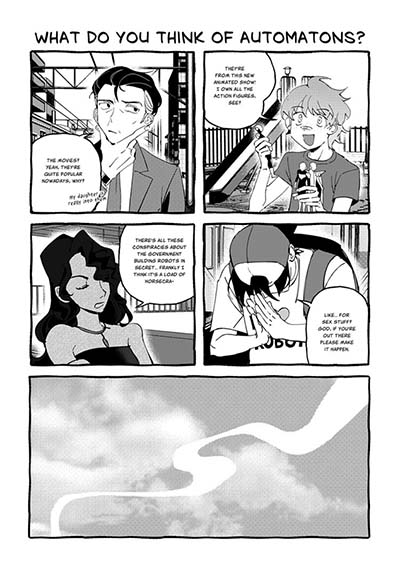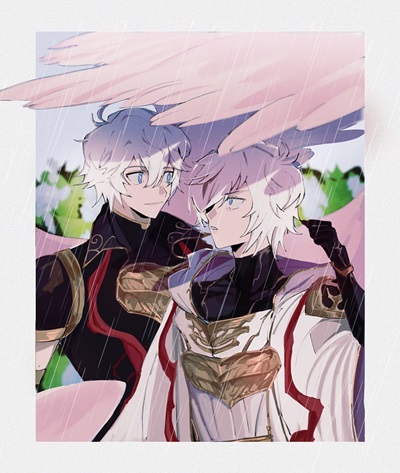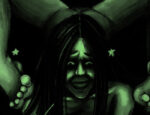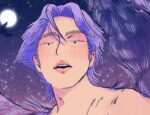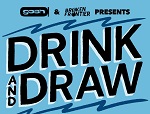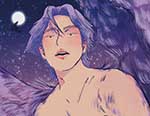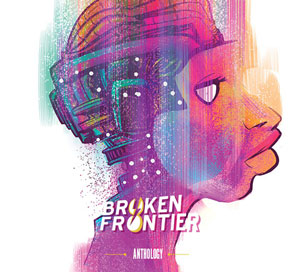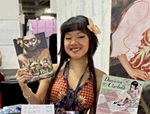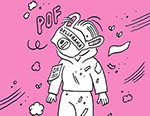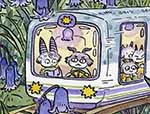Today we bring you the first of our interview series for the Broken Frontier ‘Six to Watch’ artists for 2025 and our initial subject is Zen K. aka Zenab Khan. Zen is one of those new voices on the scene whose early work astonishes you with its confidence and command of the form. No wonder, then, that two of her comics have already been picked up by Koguchi Press in the UK.
One of those, the sci-fi story Runaway Mayhem, was originally presented as part of last year’s ShortBox Comics Fair and reviewed by BF’s Lydia Turner who described it as “a chilling take on the sci-fi trope of artificial intelligence.” In January I reviewed her supernatural thriller The House at 52 Carlton Street saying “Zen K.’s understanding of how to manipulate the language of sequential art is so impressive throughout in creating an unnerving and disturbing atmosphere.”
In short, Zen K.’s work is so assured that it already looks like they’ve been working in comics for years and years. Imagine just how good it’s going to be in the future with that as a foundation to build on. I caught up with Zen to talk about her influences, creative process and what we can expect from this exciting new emerging talent next…
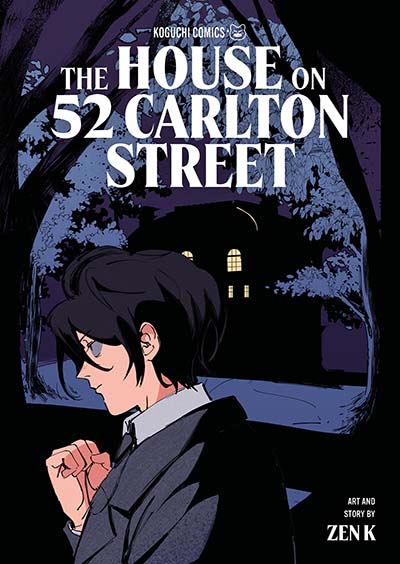
ANDY OLIVER: Let’s begin with the standard question we ask all our Six to Watch creators as way of introduction. Can you tell us about your wider artistic practice and endeavours, and your background?
ZEN K.: Hi there! I’m Zen, a Pakistani artist based in the UK! Much like any other comics artist I’ve been drawing since I could pick up a pencil and never really stopped. I studied multimedia design in university because I didn’t want to lose passion in drawing but ultimately found a nice middle ground doing art freelance. Drawing has always been my thing. Ironically, I used to make silly little comics of characters I liked WAY back when I was maybe around 11-12ish. But getting older, and kind of having developed a stronger visual eye, made the prospect of drawing comics again very daunting, and it’s only while doing my MA in 2022 that I actually began pursuing drawing comics seriously (far overdue but hey, better late than never!)
AO: When and how did you first discover comics as a medium?
ZEN K.: My first exposure to comics was probably in the back page of Sunday newspapers my grandfather used to get every week. There used to be a kids section there which had a bunch of comic strips and I distinctly remember Calvin and Hobbes, Peanuts and Garfield being my favourites.
My dad also had a bunch of old Archie digests that were handed down to me that I really loved, particularly because the characters’ fashion in that era was so good. I just found comics to be an easy segue into me getting into reading too which is basically all I did in my secondary school years, haha! I didn’t get into manga until sometime in the 2010s which is what inspired me to get into drawing comics proper.
AO: One of the reasons I selected you for this year’s Six to Watch is that you clearly understand the language of comics and what the medium can do that others can’t. What is it about comics as a narrative form that appeals to you as a storyteller?
ZEN K.: Here’s the thing; I feel like before I wrote and illustrated The House on 52 Carlton Street I didn’t understand the language of comics. I desperately wanted to! For my aforementioned MA, I had pitched my thesis on graphical horror but I obviously needed a visual output to support it with. So in my final semester I chose to write about comics as learning tools as well as the genre of horror in comics. This involved a LOT of technical research, especially into how something like fear and anticipation can be carried across a medium like comics. I delved into Will Eisner’s Comics and Sequential Art, Scott McCloud’s Understanding Comics books… I studied how other authors pace their works, how they space out their panels and write their dialogue. I think comics have so much versatility in the way they can tell a story, where tone and atmosphere are entirely in the hands of the author & artist, which makes it feel almost limitless.
AO: Your work obviously has a manga influence. Who do you count as your inspirations, both in comics and outside?
ZEN K.: It’s always hard to pick specific names when your work is like a soup of your biggest inspirations, but if I had to specifically point out any favourites, it’s Naoki Urasawa, whose work is brilliantly illustrated and paced, particularly Monster. Asada Nemui is one of my favourites as well, who does suspense and build-up effortlessly and is able to both work across shock horror and balance comedic tones well. Outside of manga I think Wally Wood is always one of my go-tos when I’m struggling with composition; his ’22 Panels That Always Work’ guide is basically my comics bible.
AO: For readers yet to pick up your two projects to date can you give us a quick idea of the premise and themes behind both Runaway Mayhem and The House on 52 Carlton Street?
ZEN K.: Runaway Mayhem is like a post-sci-fi sci-fi story, where the horrible apocalyptic event that leads to a dystopian future has long passed and we’re in a society that’s in the process of rebuilding. I wanted to basically highlight the indomitable human condition while balancing it with a fun dynamic between the main characters, who essentially come from very different worlds. There is definitely more I’d like to do with Runaway, since the one-off story is definitely meant to feel like a prologue of sorts and I hope I can one day get to it!
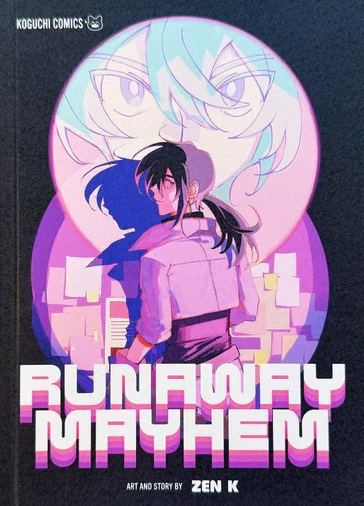
The House on 52 Carlton Street (that title is always a mouthful that I didn’t anticipate when I have to say it out loud) is my debut work which was initially an accompanying piece to my thesis about horror, which is always a fun story to tell! It’s about a skeptic exorcist who doesn’t really believe in supernatural entities and essentially scams superstitious homeowners by ridding their homes of whatever’s been haunting them, until he gets called for a gig that might actually be the real deal… it’s very Lovecraftian in nature which was intended since its conception and I’m still very proud of this work!
AO: Something that’s very obvious from your two books so far is your confidence working across genres. Was that a deliberate choice to develop your comics storytelling skills?
ZEN K.: Yes! I think it would’ve gotten a bit repetitive for me to do horror again since it hadn’t been that long since I had finished Carlton Street when I was accepted into ShortBox, so I figured I might be able to come up with an original concept in sci-fi, which is another one of my favourite genres. Admittedly I’m more confident working in horror, since from a technical standpoint I feel like I generally have stronger instinct there. But ultimately it worked out pretty well and I’d like to cover more genres in the future!
AO: As mentioned, Runaway Mayhem was originally available online as part of the ShortBox Comics Fair but both books have now been published in print by Koguchi Press. How did your books come to Koguchi?
ZEN K.: The thought of pitching my work to publishers initially never really came to mind since I always assumed my work wasn’t good enough. Also, Carlton Street was my first comic ever so I was definitely in that impostor syndrome mindset. It wasn’t until I got accepted into ShortBox that I developed some level of confidence in my work like ‘hey maybe I’m actually kinda decently good at this..?’ I heard about Koguchi because they had stocked print runs of some books from other comic artists I liked and I noticed that they publish a lot of manga-styled works and that I’d have a decent chance of having my work be considered by them. I only pitched Carlton Street for publication to them in an email since this was before ShortBox 24 started, and to my surprise they said they’d pick up Runaway Mayhem as well! I applaud them for their faith in me, hahah.
AO: Tell us about your creative process. What mediums do you work in?
ZEN K.: I work almost entirely digital, though I sometimes thumbnail on paper when I don’t have access to my computer and have a concept pop into my mind that I really don’t want to let go of! For comics I generally do a vague outline so I know my goal posts, and then script everything before I start thumbnails. It’s probably lengthier than I’d like it to be but if I don’t plan things out well I’ve had to scrap finished pages and that NEVER feels good. My art program of choice is Clip Studio Paint which I’ve been using since 2014 now and I’ll always swear by it. It has an incredible amount of comic’ing QOL tools that make your life so much easier!
AO: What are you currently working on? What kind of comics and genres can we expect to see from you next?
ZEN K.: I’m doing a short self-published fanbook next month for an online Japanese event, as for original work I’m thinking maybe something queer with a tinge of horror :¬) I’d like to be involved in anthologies with other creators too. The possibilities are endless, so please keep looking forward to my work!
Work from Zen K.’s illustration practice
AO: And, finally, as someone making earlier connections within the scene at events and online what have been your impressions of the wider UK comics community to date?
ZEN K.: I’m genuinely so pleased at how helpful and supportive the UK comics community has been! I’m used to artist spaces having a high level of competitiveness and elitism but everyone I’ve spoken to in the indie press scene has been very kind and supportive. There’s also a wealth of opportunities here that I wouldn’t have known about if I hadn’t immersed myself in the scene and it’s great to see events run by people who are genuinely passionate about comics!
You can visit Zen K.’s website here including links to buy her comics. Or you can go straight to the Koguchi Press webstore Follow Zen on Bluesky here and Instagram here.
Interview by Andy Oliver






